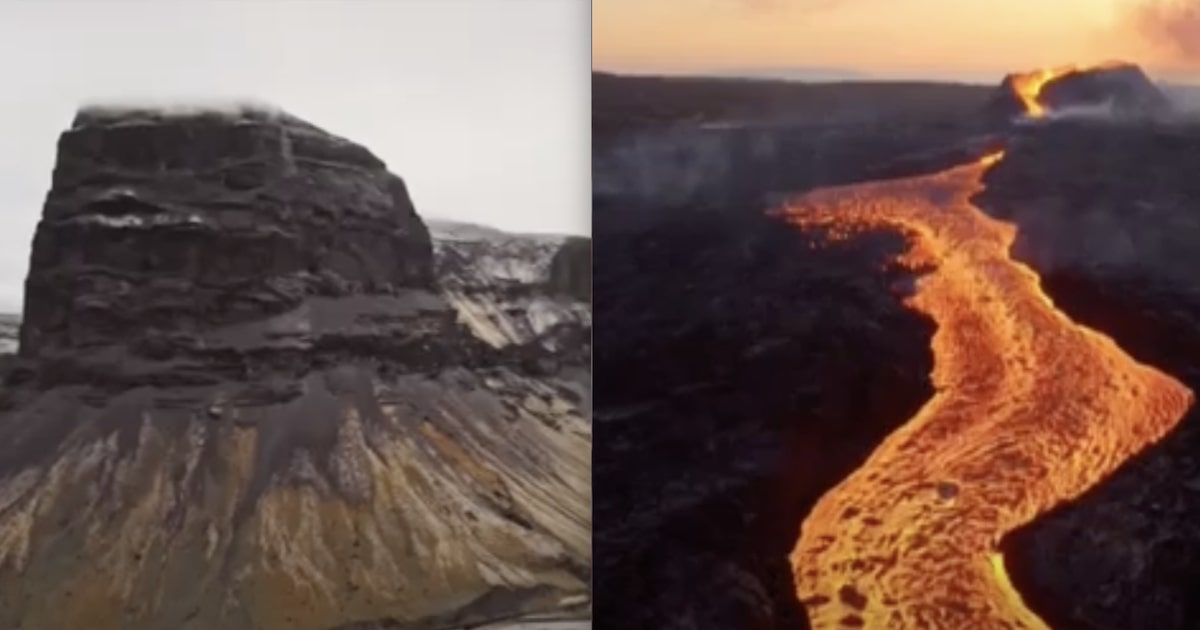Iceland volcano eruption could have killed many in Wales

Drones are helping a team of university researchers understand how a volcanic eruption in Iceland more than 240 years ago could have killed people in Wales
The team of researchers and a volcanologist from the University of South Wales (USW) have used specialist equipment to develop detailed imagery and a virtual view of one of the most dramatic mountains in northern Europe.
And it could help geologists gain a much better understanding of the volcanic activity which has shaped the landscape of Iceland.
Earlier this year the GIS Informatics research team from USW used drones to survey Lómagnúpur mountain in southern Iceland. Rising to 764 metres above sea level, the cliffs on one side are the highest inland cliffs in the country at 671m, which is close to three quarters the height of Pen y Fan.
The initial work on getting the drone survey completed was unusual for the GIS research team at USW, because they are generally undertaken with an initial visit to the site of the flight.
However, because the mountain is more than 1,000 miles from South Wales, VR headsets connected to Google Earth along with specialist drone software were used to plan and simulate the entire flight operation.
“The 3D model came out well, with lots of detail,” said Joseph Griffiths, a lecturer in Informatics at USW who, along with colleague Nathan Thomas – an experienced and qualified drone pilot -carried out the drone survey.
“The 3D model is quite impressive and is generated from hundreds of individual photos which are processed into a highly complex geo-referenced point cloud. There is now scope to develop an interactive VR view of it and also the possibility of producing a detailed 3D printed model of the mountain so that people can see exactly how it looks.”
The Iceland drone survey and geological fieldwork has been carried out thanks to funding from Taith, a Welsh Government-backed scheme to support international research collaboration, in this case with scientists from the University of Iceland. Geologists from Newcastle and Lancaster Universities are also involved in the study
Volcanologist Dr Ian Skilling, who is a senior lecturer at USW, explained why the survey and fieldwork at the mountain could be so important.
“The details of Lómagnúpur that have been captured by the drone will be very important to geologists who are studying the history of volcanic activity in the area and help predict what might happen in the future in this very volcanically active area of Iceland,” he said.
“The mountain is very close to Iceland’s most active volcano, Grimsvotn, which is actually underneath Europe’s biggest ice cap called Vatnajökull, and typically erupts every few years. This area of Iceland has been very volcanically active for millions of years.
“We do know that around 240 years ago a massive eruption on the edge of the ice cap produced around 22 cubic kilometres of lava, the largest volume lava flow in recorded history, and caused a plume of toxic gas over Europe. According to parish records from the time this could have caused many deaths in Wales.
“If a similar large volume eruption underneath this ice cap happened now there could be a serious issue both with toxic gases and impacts on aircraft from the ash in the atmosphere.
“That’s why flying the drone around Lómagnúpur and examining the rocks in detail in the field is very important, as the mountain provides a long record of the interaction of large lava flows and ice caps in the past.”
Support our Nation today
For the price of a cup of coffee a month you can help us create an independent, not-for-profit, national news service for the people of Wales, by the people of Wales.





The eruption of Laki in 1783 was harrowing for the people in Iceland which is detailed in a book “Island on Fire” by Alexandra Witze and Jeff Kanipe.
From our perspective work on parish registers in central England suggest that the gas pollution killed in excess of 20,000 and the potential still exists and with a far larger population already suffering from pollution related disease eg asthma it could still be very nasty. You do not need to be near a volcano for it to do you real damage.